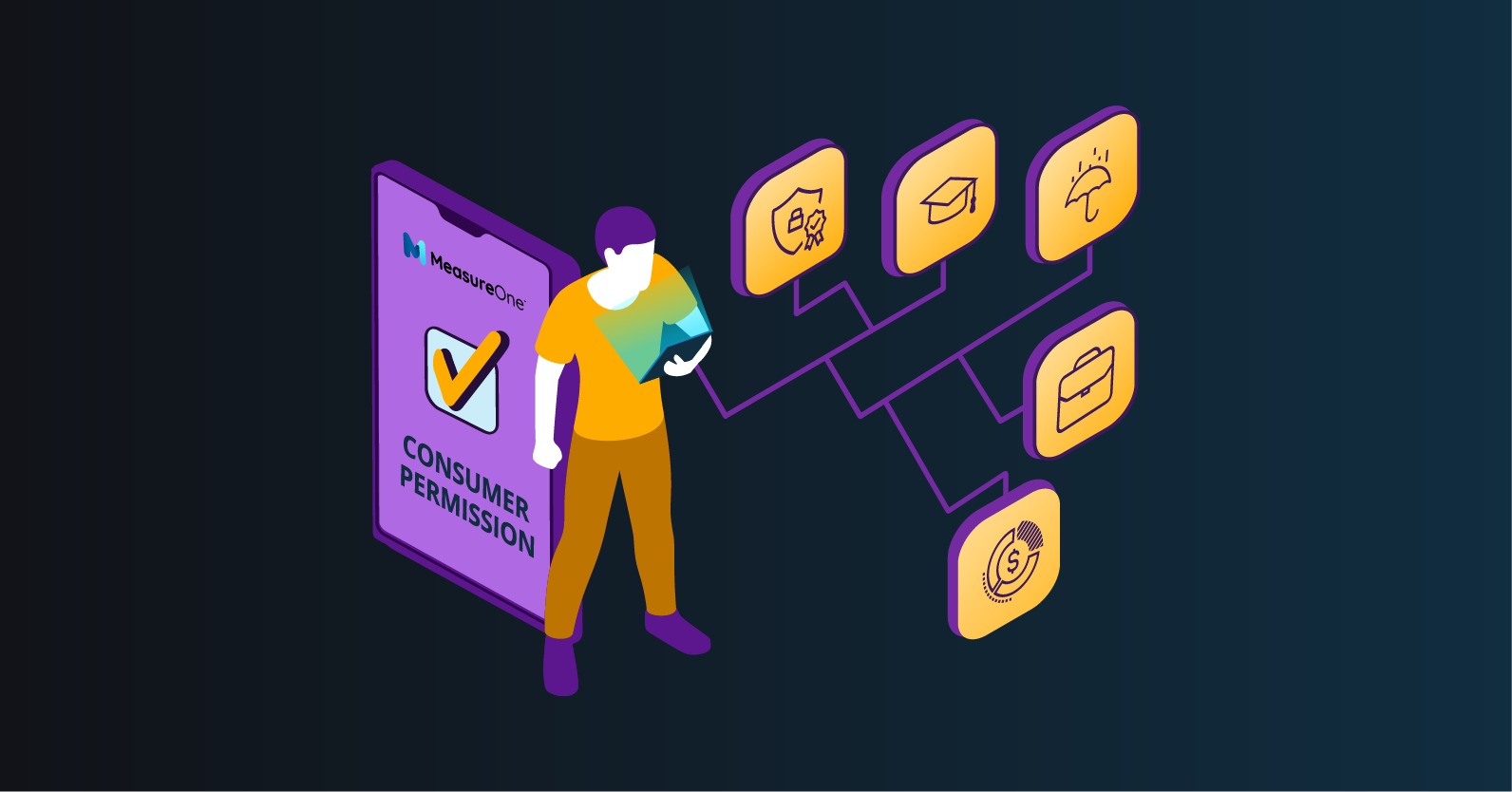Contents
- MCP vs A2A: What each protocol is designed to solve
- A2A vs MCP: What are the differences?
- Differences in architecture between MCP and A2A
- Differences in messaging between MCP and A2A
- Differences in security between A2A and MCP
- When to use which: Practical methods for engineers
- Combining tools for engineering dexterity
- Why run an MCP server (and how MeasureOne helps)
As agentic systems move from research demos into production, engineers face a practical question: how should autonomous pieces of your system communicate, using a model-centric context protocol (MCP) that exposes tools/data to models, or an agent-to-agent (A2A) protocol that lets agents talk to each other?
Both are “standards” in the emerging stack, but they solve different problems and impose different responsibilities on developers.
MCP vs A2A: What each protocol is designed to solve
MCP (Model Context Protocol) is an open standard introduced to let LLM-based applications connect securely and consistently to external data sources and tools. In short: MCP treats the model as the primary actor and standardizes how a model requests context, tools, and actions from external servers (the “MCP servers”). This reduces bespoke integrations for each model/data pair and addresses the N×M integration problem.
A2A (Agent2Agent) is an explicitly multi-agent communication protocol: it’s about agent discovery, capability negotiation, task handoff, and inter-agent messaging. A2A is designed for scenarios where multiple autonomous agents (potentially from different vendors or frameworks) need to coordinate or delegate subtasks to one another. Think “who is responsible for planning vs. execution vs. fact-checking” in a distributed workflow. Google’s A2A materials emphasize discovery, capability advertisement, and lightweight negotiation primitives as first-class features.
A2A vs MCP: What are the differences?
Differences in architecture between MCP and A2A
Architecturally, MCP is client–server: the LLM (or client wrapper) queries MCP servers to fetch context or invoke app-level operations; servers return structured context and optionally perform actions. The pattern is ideal when you want a model to remain the central decision-maker but need standardized access to many external services.
A2A, by contrast, treats agents as peers. Each agent advertises what it can do, communicates intents and results, and participates in multi-party coordination. State is often distributed or replicated among participating agents (or managed by a coordinating orchestrator), so you trade the simplicity of a single “model-as-controller” for richer collaboration semantics.
Differences in messaging between MCP and A2A
From a developer perspective the differences show up in message semantics:
- MCP messages are typically: “give me the context for X / run this tool with these args / return structured output.” The payloads are strongly oriented to tool/data access and are framed around the model’s prompt lifecycle.
- A2A messages are oriented to capability exchange: “I can perform task T with confidence; do you want me to take it?; here’s my result; who will verify?” A2A needs discovery meta-channels and lightweight schemas for negotiation and capability advertisement.
Because MCP is about standardizing tool access, its schemas emphasize authenticated resource access, context filtering, and provenance. A2A requires richer metadata (capabilities, SLAs, agent identity) and often needs message routing and optional multi-party consensus semantics. The AWS guidance on agent protocols highlights these tradeoffs and lists MCP as a flexible foundation that can be extended for inter-agent use cases, while A2A focuses specifically on inter-agent choreography.
Differences in security between A2A and MCP
Security models differ substantially. MCP servers are gates to your data: If an LLM can call an MCP endpoint, misconfiguration or insufficient auth can leak private context, where prompt injection and unintended disclosures are practical risks. Production MCP deployments therefore need robust authentication, fine-grained authorization, audit logging, and filtering at the server boundary. Journalistic coverage and industry writeups warn developers to treat MCP endpoints as sensitive, production-grade services.
A2A introduces non-human identities and cross-agent trust problems: agents need to authenticate, verify capabilities, and often require ephemeral scoped credentials for delegated tasks. On the upside, a well-built A2A layer lets you isolate privilege per agent (agent A can only call agent B for X), which helps with the principle of least privilege in complex systems, but it increases protocol complexity and operational surface area.
When to use which: Practical methods for engineers
Use MCP when:
- You want the LLM to remain the primary decision-maker and need standardized access to your databases, tools, or actions.
- You have many models or tools and want to avoid writing bespoke adapters for every model/tool pair.
- You need to expose data/services in a controlled, versioned API-like way to models.
Use A2A when:
- You are building a true multi-agent system where agents must discover, delegate, and negotiate responsibilities among peers.
- You need runtime capability negotiation, task delegation, or agent-level SLAs.
- You require complex orchestration that benefits from peer-to-peer collaboration semantics.
Combining tools for engineering dexterity
In practice, systems often use both MCP and A2A.
MCP is used as the standardized “tool access” layer and A2A for multi-agent orchestration on top. An agent may use A2A is used to find a specialized agent, then that specialized agent may call MCP servers to fetch secure data or perform actions. This layered approach keeps tool access secure and versioned while preserving agent interoperability for coordination.
Why run an MCP server (and how MeasureOne helps)
If you’re building LLM-driven workflows that need reliable, auditable access to data, exposing those resources via a production-grade MCP server simplifies model integrations and reduces custom code. Choosing a partner who already has a turnkey MCP server is even better.
MeasureOne’s MCP server, built into our consumer data platform, helps developers and businesses:
- Plug AI agents directly into the data they depend on
- Automate essential insurance, employment, and consumer data workflows
- Reduce friction across high-value processes like financing and claims
Ready to unlock real-world data for smarter AI? See how MeasureOne can power your consumer data workflows via MCP Server.

